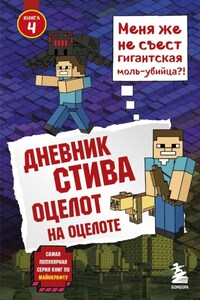Chapter 1. Ice Age
When the onset of spring drags on, it seems that winter will be forever, as in the ice age. Mica was telling his son.
Over the last million years of the existence of planet Earth, there have been several ice ages, and the latter ended about 10 thousand years ago and maybe not yet. In the middle phase of the last ice age, glaciers on land reached Kiev. They ice bound large rivers of Europe, Asia and North America, which seemed streams flowing from the giant tongues of ice. And in America, under the hundred-meter thick ice, there were Great Lakes, or rather they were not.
Chapter 2. Deer and wolves
Three hunters from the Mammoths tribe, Father and two sons, had been watching the plain covered with ice for several days. This steppe stretches along the edge of the southern seas and mountains and stretches to the icy mountains of the Great Glacier, where no one lived and where life went. These were the people of the eolite of the time, when groups of Neolithic hunters still roamed on Earth, but tribes of pastoralists capable of taming animals have already appeared. With the hunters there was a large flock of tamed wolves. They differed from their wild relatives in black and white color and tails slightly twisted upwards. The flock was supposed to cut through a large herd of reindeer and drive in the direction the hunters needed. The main role was the leader of the pack of large white wolf, more than a meter at the withers. Perhaps he was a descendant of the first wolf tamed by the Father of the tribe. Deer were larger than modern deer. They looked like moose with very branched horns in males (up to two meters wide) Father shouted, and the wolf dogs rushed to the herd. They, like their not yet tamed relatives, knew how to divide a large herd into groups and units. Hunters in hides and fur boots followed the wolves with long sticks in their hands. It was necessary to prevent the environment of the deer from passing into their extermination.
Father shouted, and the wolf dogs rushed to the herd. They, like their not yet tamed relatives, knew how to divide a large herd into groups and units. Hunters in hides and fur boots followed the wolves with long sticks in their hands. It was necessary to prevent the environment of the deer from passing into their extermination. At the end of the stick was a belt loop – erga, which had to be thrown on the main deer, fettering its mobility. Wolves surrounded the main deer, but without the leader’s command they retreated in front of his horns, and the leader was waiting for people. After the hunt, wolves and people drove part of the herd to the tribal camp, where children and wolf cubs were waiting for them.






